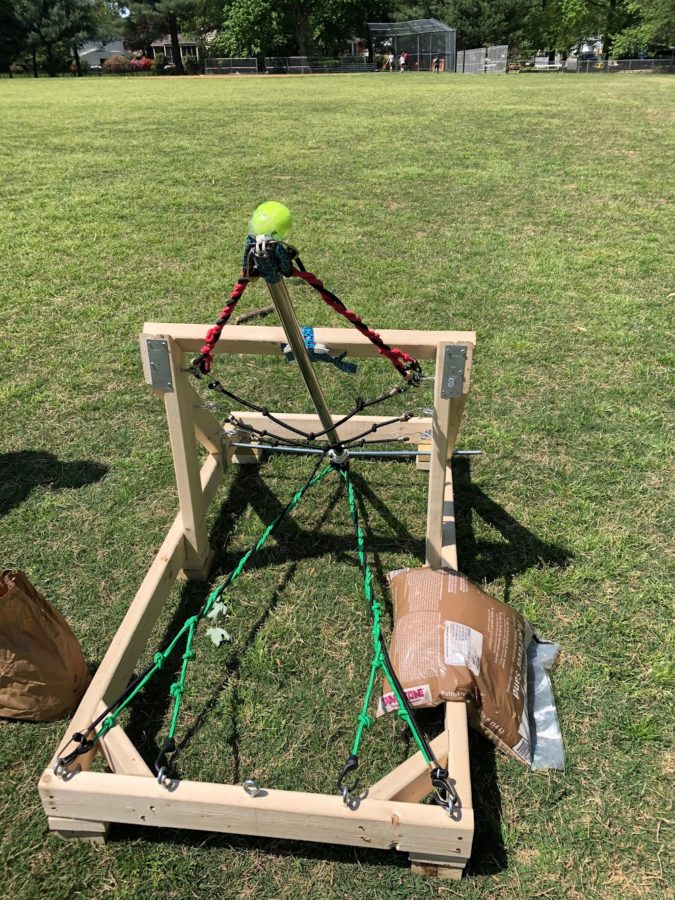Juniors catapult towards glory
AP Physics students participate in notorious catapult project to close out the school year
The catapult’s are made from all type of elastic materials. A tennis ball was used as the projectile. (Photo courtesy of Priya Shahi)
May 20, 2019
It’s springtime, and along with allergies and other early year mainstays, juniors at McLean who take the AP Physics course participated in the classes annual catapult project. The task is relatively simple: students must try to build a catapult out of whatever resources they can get their hands on and launch a tennis ball as far as possible.
“Each team had to design a catapult no larger than 1.5 meters in each direction, and the goal was to be able to launch a tennis ball 50 meters. We were not able to use “compressed air, combustion, or a pure slingshot” for our catapults, and all of the materials we used had to itemized,” junior AP Physics Priya Shahi said. “For all teams, the lab report has to include design plans, a daily construction progress journal, list of materials and costs, testing results, and launch day results.”
The project tests the students ability to apply what they have learned throughout the year into one keystone project the forces them to be creative and innovative. The highly anticipated launch day came on May 2. and students were anxious to see how their Frankenstein-like contraptions who fair against the competition and the rubric.
“The most difficult part of the project was trying to construct the catapult to fit the design. Typically, the materials we use have imperfections, and, often, what we design can be completely different from what actually ends up happening,” Shahi said.
Many days of construction and calculations culminate into a competitive flinging of balls on the practice baseball field. Each group of up to four aims to have their creation launch the ball an average of at least 50 meters, the minimum threshold for students to get excused from having to do painstaking failure analysis calculations (salt in the wound for those who didn’t succeed in reaching the supreme distance), which is basically the process of using physics equations to show why your catapult didn’t reach 50 meters.
“On launch day, each team had 6 trials and received a certain number of points for each tennis ball that passed a metered benchmark,” Shahi said. “Our team designed our catapult to have bungee cords that hooked onto both the bottom and top end of the lever arm. However, when we tested it for the first time, the little bit of extra length from the hooks of the bungee cords caused the bottom end of the lever arm to dig into the ground and stop the lever arm from moving when we released it. We were able to fix it by raising our catapult on piece of wood we placed at each corner, but it was unexpected changes like those that made it difficult to build our catapult as we had originally designed it and predict how it would work.”
Grades are calculated by the distance in comparison to that of the 50 meter measurement. For example if your ball goes 25 yards, then you can expect a unforgiving score of 80%. There are meter benchmarks (15 ,20, 30, etc) for students to pass in order to gain points towards there score. Although, any points missed on launch day can be made up by students who do failure analysis after.
Only one group made it passed the 50 meter mark in Shahi’s class, with another two achieving a modest average between 40-50. This project represents a major grade and proving ground for some of McLean’s elite academics. To a a scared few and the satisfaction of others, the AP Physics catapult project doesn’t seem to be going away anytime soon.


